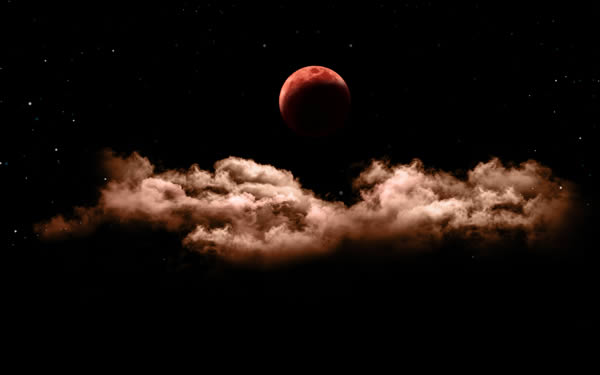Blog
-
by Steven Forrest
If you live in North or South America, the sky will put on a very fine show on the night of January 20/21. Lunar eclipses are not rare, but ones that coincide with a so–called "Super Moon" are a lot more unusual. And that's exactly what you will be seeing, provided that no clouds get in the way: a particularly big Full Moon going dark, maybe even turning coppery–red in the process.
Caveat: absolutely guaranteed, the media is going to oversell it, leading to lots of disappointment among people who've been jaded by special effects in movies. I can see the hyperbolic Yahoo! headlines now: GIGANTIC MEGA-MOON ECLIPSES ENTIRE SKY! And of course somebody somewhere will have their fifteen minutes of fame by proclaiming some grand governmental conspiracy to conceal the fact that the Moon will collide with the Earth, probably due to some alleged malfeasance on the part of Hillary Clinton.
Ignore the hyperbole, but please, if you possibly can, have a look at this sky–show! Just keep your expectations somewhere south of seeing a real–life Star Wars up there that night.
Lunar Eclipses are languorous affairs, to be savored like long, slow winter sunsets or your last piece of chocolate. Totality, for example – the period of total lunar eclipse – lasts about an hour. Compare that with the frantic few minutes of a total solar eclipse. That's an entirely different beast, and admittedly a lot more spectacular. January's Moon–show, from the first, nearly–unnoticeable "penumbral" contact of the outer edges of Earth's shadow with the Moon to the final " not–with–a–bang–but–a–whimper" end of it all, runs about five hours.
-
First, a review of the full Moon: Remember that the Moon rules the ocean's tides, and that water is a primordial symbol of feeling. Everyone's emotional "tides" are running higher (or lower) during a full Moon. This effect is more emphasized if you have a Cancer Sun, Moon or Ascendant, or a full or new Moon natally, or the Moon in an angular house natally. Try to give everyone a bit more compassion and understanding, and remember that they (and you) are more subjective under the full Moon.
If the transiting full Moon falls within about 4 degrees of a conjunction OR an opposition to one of your natal planets, then how you express that planet *vis-a-vis other people* is lunarized for the two lunar months before and after that full Moon. The month before the full Moon is probably felt more strongly, and the month after involves more reflection and processing.


